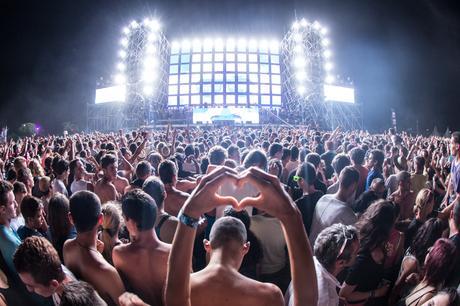
Why are music festivals still so male dominated?
It was 2014 and I was getting ready to soak up the sun and enjoy an alternative rock music festival in Boston. As I browsed the lineup—which included big names like Bleachers, Twenty One Pilots, The Killers, and Childish Gambino—I asked myself: Where are the women? I’ve been to countless festivals over the years and have constantly asked myself that same question. I’ve always been madly in love with indie rock music, underground artists, and the entire festival scene, but it’s never been clear that the love is returned.
Although 50 percent of the 32 million people in the U.S. who attend music festivals are women, the gender of the performers at them hardly reflect their viewers. Coachella’s 2016 lineup included 168 male artists and just 60 female artists. Lollapalooza’s 2016 festival featured 124 male performers and only 47 female acts. Only 20 female artists appeared at the Ultra festival, while an incredible 198 male acts composed the remainder.
This gender disparity at music festivals isn’t exactly new. Quite a few writers and performers have talked about the lack of female artists at festivals. Alyssa DeHayes from Riot Act Media & Arrowhack Records said, “It still feels like a bit of a boys club, but our club is growing, too.” The indie pop band Carmody also commented, “I still feel that people in the music industry can be quite patronizing to women, particularly in regards to performing live.” And yet despite this obvious imbalance, festival curators still don’t always consider gender when creating their lineups. As Pasquale Rotelle, CEO of Insomniac Events, told the Huffington Post, festivals aren’t booked based on gender, but on the quality of the music.
While this disparity is at least being discussed in terms of indie pop/rock-focused festivals festivals, other genres—like EDM-centered festivals—have a much greater gender disparity than indie pop/rock-focused festivals. EDM is well-known for being dominated by male performers: women made up 11 percent of artists at EDM festivals in 2015. Even googling “female DJ” doesn’t easily reveal many female mixers or producers.
A lot of factors contribute to men dominating the EDM festival scene in particular. Lineups depend on which bands are touring the year of the festival, and the processes of scheduling and booking, handling money, and/or the band’s genre also contribute to these decisions. But beyond technicalities likes these, there’s a misconception in the industry, especially when it comes to genres like EDM, that women aren’t technically talented. Emma Olson, aka DJ UMFANG, said she once thought synthesizers and programming would be harder for her to learn to use because she is a woman, and was encouraged by the industry to believe this absurd idea. Obviously, men aren’t any better at DJ’ing or programming than women, but because many women are conditioned to buy into gender stereotypes that hold them back, men end up dominating the industry.
It seems the key to decreasing the music industry’s gender gap is to educate people about these cultural stereotypes and to tell women artists that they are as equally talented as their male counterparts. If you’re an aspiring female musician, DJ, producer, or artist of any kind, know you can make it in the industry. You can take online engineering classes to improve your sound on stage, or join a music education club like the National Association for Music Education. There are also many music equality organizations, like Women in Music and Future of Music Coalition, who’re working to tackle the gender gap in the industry and educate performers around the world, too.
The bottom line is women are as equally talented and ambitious as male performers. There’s no reason a talented artist can’t dominate the music industry just because of their gender.

